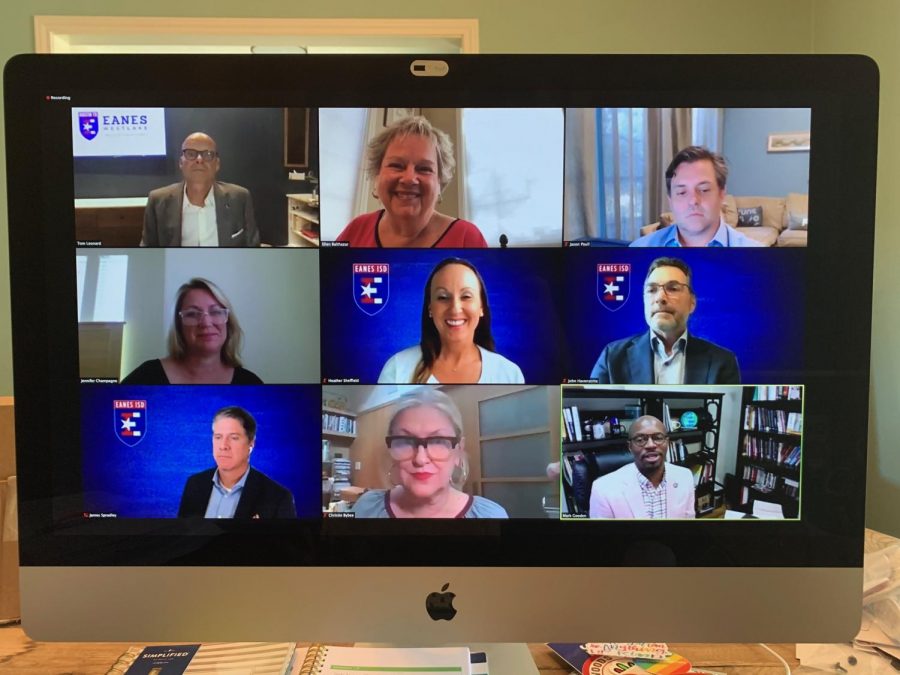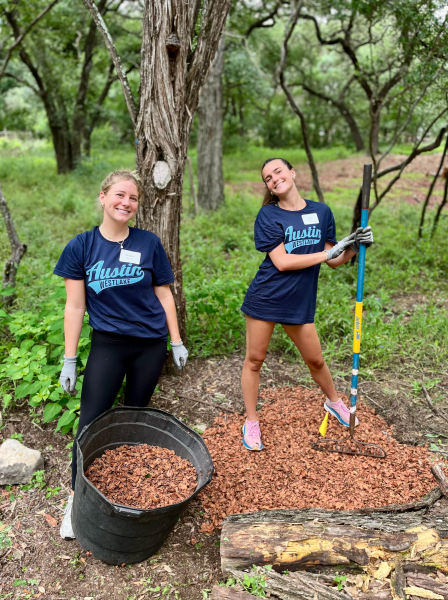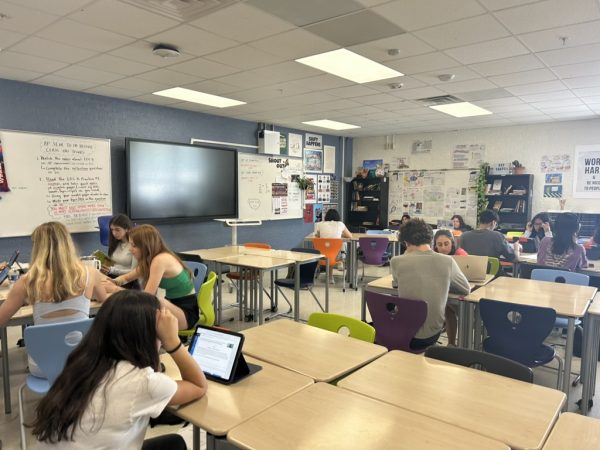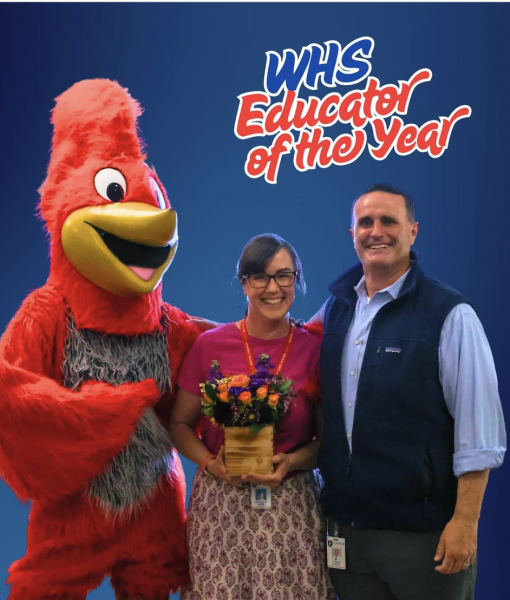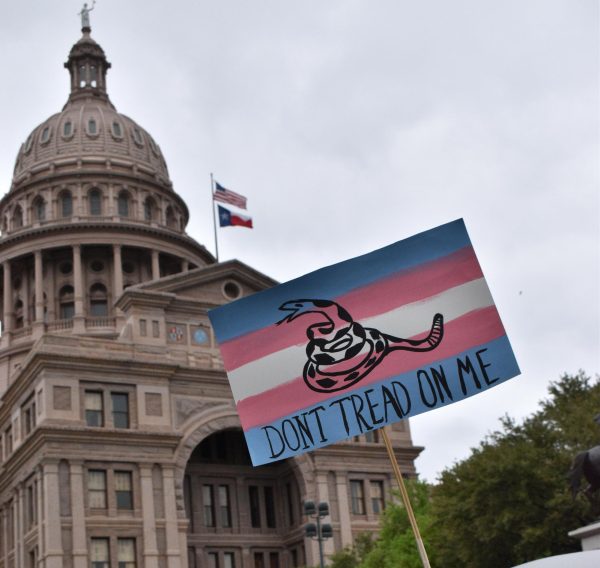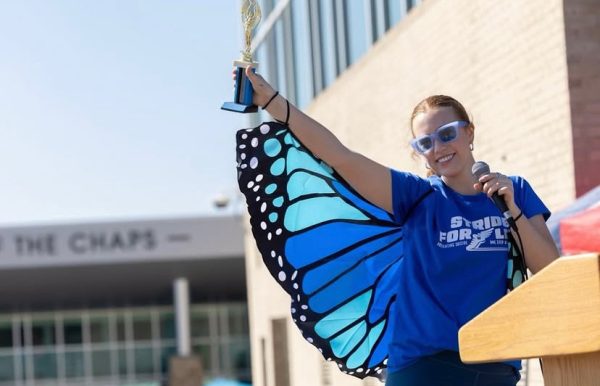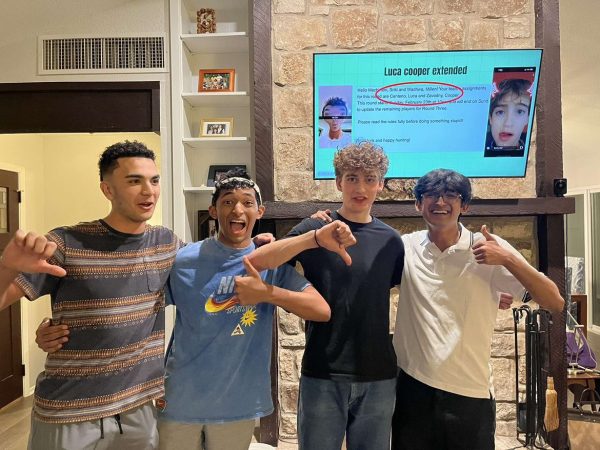Diversity, Equity, Inclusion Consultant guides development of racial awareness in Eanes ISD
Eanes ISD Board of Trustees talks with Diversity, Equity and Inclusion Consultant Dr. Mark Gooden at the Aug. 11 board meeting. Dr. Gooden will guide the development of racial awareness in the district in the 2020-21 school year.
“I want folks to abandon this idea of being good and embrace this idea of doing good.”
This is how Dr. Mark Gooden, Diversity, Equity and Inclusion Consultant, explained his role in facilitating discussions surrounding race and racism in a way that helps people grow and learn to do good for their community. I witnessed this firsthand during our hour-long interview, in which he managed to turn every question into a lesson about racial awareness, asking us thought-provoking questions of his own as he went along.
“My role as the DEI Consultant really is to — at least the way I see it — work with leaders in [this] work,” Dr. Gooden said. “By leaders, I mean folks who may be leaders in position but also leaders who are really taking advantage of the moment and developing leadership skills around anti-racist leadership, so not necessarily position. A large part of my research is built upon working with leaders in formal positions, primarily principals and superintendents. However, I have also worked with teacher leaders, people community leaders, posing nonprofits and a range of other things.”
Dr. Gooden is currently the Christian A. Johnson Endeavor Professor of Education Leadership and Director of the Endeavor Antiracist and Restorative Leadership Initiative in the Department of Organization and Leadership at Teachers College, Columbia University. The Eanes Board of Trustees voted to hire Dr. Gooden during the July 21 board meeting to provide needs assessments, professional development, consulting for racial equity and general guidance for the Diversity, Equity and Inclusion work taking place in Eanes.
Senior Advisor Linda Rawlings heads this work. According to her, it actually began two years ago with an effort called Culturally Responsive Classrooms.
“We really have been along this path for several years,” Rawlings said. “A couple of years ago we had a committee of parents get together to look at what we could do to make things better. And one of the things that bubbled up around SEL [Social Emotional Learning] was the diversity piece. People [were] talking about our district not being as diverse as they wish it could be. And it’s hard to change things like that, right? But [we] can work to help our kids have a greater appreciation and acceptance of people who don’t look like they do or don’t have the same religious beliefs, gender identification, whatever it is. And so we started what we call this Culturally Responsive Classrooms group.”
The group did some staff development work two years ago, sending a group to Teaching Tolerance in Houston with the aim of bringing back what they had learned to share with other teachers. They decided to offer training to the entire staff in August of this year. However, due to the circumstances of COVID-19 in March, the focus of the district quickly shifted towards developing remote learning, so the group had to push back this plan.
“We hadn’t even heard of Zoom,” Rawlings said. “[We had to focus on] how [teachers] are going to Zoom classes, what tools [were] going to be necessary. So, we deferred the Culturally Responsive Classrooms until later because we knew we just couldn’t do that.”
However, the events of the summer surrounding police brutality, protests and anti-racism movements brought the plan back to the front.
“The general uproar [made us feel] that we needed to finally address some of the divide in the country over racial equity,” Rawlings said. “We were having a conversation about that at the district level because we knew that both current and former students were having conversations about that, and our staff was talking about that. To [superintendent Dr. Tom Leonard’s] credit and the board’s credit, I think they felt like this is the opportune moment. We felt like we needed to address it, and the time was now.”
Lesley Ryan, the principal at Eanes Elementary, had studied under Dr. Gooden at the University of Texas, and she recommended him as a possible DEI Consultant. After learning that he is now at Columbia University, Rawlings met with him, Dr. Leonard and several others.
“We learned that he knew people in Eanes ISD, so he had an awareness about our school district,” Rawlings said. “He has led this work in other school districts around the country. He is on the cutting edge of the research around diversity, equity and inclusion. I really like that he has been doing this a long time, so he understands that it’s a process and it takes time. Ultimately through those conversations, the feeling was he was exactly the right person for the job.”
Hiring Dr. Gooden is the beginning of a longer process. In addition to a needs assessment,staff development and training for all district staff members, a DEI Advisory Committee and other campus equity teams are being created to help further the initiative. Under Dr. Gooden’s guidance, Eanes will address racial awareness within the district, form staff professional development plans for this school year and establish appropriate responses to reported incidents.
“We’re going to have to have some honest conversations about what’s happening and maybe take some assessments of what’s happening,” Dr. Gooden said. “We want to be clear that together we’re creating a culture to address some of these issues, and one of the ways of doing that is to have the folks understand how to respond.”
So far, Dr. Gooden has done training with the principals, assistant principals and the central office administrators in July. He presented a Keynote in August and ran a series of trainings for the teachers and everybody else working in the building, including those working in the cafeteria or as bus drivers.
“Everybody in the district has been exposed to the work through one of those sessions,” Dr. Gooden said. “There’s still a lot of thought about what’s going to work best in terms of developing a plan and pushing it out across the district. I’ll be looking at students, teachers and administrators who want to lead this work.”
For him, working with the administration has been positive.
“We’ve been able to do a lot in a very short period of time,” Dr. Gooden said. “[After] I was approved by the board, I went to work right away. I had to get [the customized needs assessment] up and running to collect some data prior to the training. People have been very curious and enthusiastic about the work for the most part, and folks have asked some really difficult questions, which I welcome. I have found that the questions have been genuine. Teachers are very conscientious about doing the best job they can; they want to make sure that they are impactful in their work and they want to do it in a way that’s right.”
Likewise, Rawlings said she, as well as other district members, have had a productive experience working with Dr. Gooden.
“He is always prepared for every meeting that we come to,” Rawlings said. “He wants to know who’s going to be at the meeting and what it’s going to be about, so that he is absolutely ready. Let me give you a case in point, we met with sixth grade middle school teachers who are teaching ‘Ghost Boys.’ He read the book. He’d never read the book before, and I think it impressed the teachers so much that as busy as he is, he took the time to do that. I’ve seen him in small group settings where sometimes people are sharing things that he may not agree with. But he’s always thankful that they have shared the way that they feel. He’s a great example of civil discourse around a difficult topic.”
According to Dr. Gooden, DEI work starts with becoming aware of our biases.
“I think everybody has biases, right?” Dr. Gooden said. “Once they are made aware of those biases, the idea is that they will be interested in changing them to be more consistent with what they want to happen in their work. My work gives people an opportunity to interrogate those biases. The work goes into this idea of making people more racially aware. So people develop their racial awareness with a hope of transferring that into action that they will then use to transform the organization.”
Specifically, he mentioned a racial reflection to help people understand how they fit into these conversations surrounding racism.
“The racial reflection is a really impactful way to start [becoming aware of our unconscious bias],” Dr. Gooden said. “I usually coach people in doing this. I give people a space to reach back and dig into their memories and point out some things that have happened in their lives around race. What’s your earliest racial incident or racial situation? What role did you play? How did you feel? What did you do? And then from there, that’s an initial foray. That’s not the full racial autobiography. We take that and we expand it into a deeper, longer essay, if you will.”
He described the focus of DEI work as making schools more democratic; more specifically, helping students become educated so they can participate in the democracy. To undertake DEI work, we need to realize that not everyone can participate equally in democracy in general society — and the same is true about high school.
“Not everybody is regarded as fully human, not everybody has a way of exercising their First Amendment [rights] without the same penalty,” Dr. Gooden said. “Imagine if your child went into a space, and every single day, they were reminded that they don’t belong there. Would you want to be silent on behalf of your child? Would you want people not to engage in work that could change that situation? If the answer is no, then I’d say that’s being unfair to someone if that is their experience. This [work] doesn’t take away from the learning. This actually enhances the learning, but people first have to trust that belief.”
DEI work was not initially something Dr. Gooden wanted to do. He was a secondary mathematics teacher, and he was not interested in engaging in this work outside his teaching job. However, as he put it, he wanted to be more impactful as a professional with an awareness of his social identity, so he began reading the work of author Derrick Bell — an American lawyer, professor and civil rights activist who wrote about race theory in America. He recommends “And We Are Not Saved” and “Faces at the Bottom of the Well.”
“I started to read [Derrick Bell], and I wasn’t planning on doing any kind of DEI work or presenting this, but what I realized is as I read that and went into developing trainings with people, my own narratives came back,” Dr. Gooden said. “I had to acknowledge that this kind of work is particularly emotional for me as a person of color because I had to bring up some narratives that were painful for me. When I did that, a number of colleagues said the way in which I presented really got people to engage in the conversation and open up and share their own stories and their own narratives and their own shortcomings around conversations on race.”
Later, he went into a PhD program full time.
“I got a chance to really dig deep into the research and try to do a better job of asking better questions and understanding what I did not know,” Dr. Gooden said. “My original work started formally back in 2001, which was my first job as an assistant professor at University of Cincinnati. And the more I read, the more I engaged with leaders in the classroom, the more I experienced doing the work, my students would come to me and say, ‘You know, it’d be really good if you could come out and just talk to my teachers or talk to my leadership team. Just teach them what we’ve been doing in class.’ So that got me started in terms of doing work within a classroom and formally going out and working with school districts.”
Since then, Dr. Gooden has worked with school districts like Austin ISD, university leaders, leaders at community colleges and leaders in nonprofit organizations.
One of the things Dr. Gooden does for every audience is making sure there is a set of agreements and determination about how they’re going to do the work. He takes an assessment of the racial and cultural demographics of the room because he has found that participation can depend on racial identity.
“So in other words, if you identify as a person of color, specifically if you’ve been racialized as black, I can take a pretty good guess and say you’ve had some conversations in your space about race,” Dr. Gooden. “It could’ve come from your parents. It could have been ‘the talk.’ But for my white colleagues, they’ve had some but much fewer conversations [about race], right? And so when it comes up, and there are people of color, they’re a little bit anxious because they have not discussed it as much or [discussed it] in positive ways with people who look like them. They become really anxious about talking about it at all. That comes directly from research I’ve been doing in the work and also anecdotally from friends who are white, who’ve been very honest about it.”
Ultimately, to Dr. Gooden, success means working himself out of a job. His primary goal in the district is capacity building and creating leaders who will lead this work in years to come.
“In other words, it doesn’t need to be Dr. Gooden at the front of the room,” Dr. Gooden said. “It needs to be teachers who are leading this work. It’s much more powerful and sustainable than me — I’m a consultant, I’ve been brought in to do the work, and I work from contract to contract or year to year. It’s not about coming in and calling people names or calling folks out, or making sure we find the enemy or the bad actors. Certainly, that’s not my goal. My goal is to build capacity so that this can be a much more powerful and positive learning environment for all students, especially those who have been abused or feel especially marginalized by some of the things that have been happening.”
In addition to teachers and administrators, Dr. Gooden said he would love to see a large contingent of students leading this work.
“If you look at what’s happening in America now, a lot of what’s taken place has come from young people,” Dr. Gooden said. “I just want to be able to present students with the tools to continue engaging in this work. We’re looking to see students who get a chance to express their leadership. I can very easily see another set of leaders coming out of the current students, because from my understanding, a lot of the work that was done on the outside was led by an Eanes alumni. Hopefully, students will feel that way about doing the work and making the change. And my sense is they will because I have seen these Instagram sites and I have seen a lot of the additional reports, and a lot of that came from students which says to me that they’re ready to do something about it.”
Having worked in DEI for almost 20 years, Dr. Gooden said he sometimes gets discouraged having to continue to do this type of work.
“This work weighs heavy on you,” Dr. Gooden said. “I’d be lying if I said it didn’t. Oftentimes, there are ways that you should support yourself and take care of yourself in this work. And I always follow those like I should. But you have to remember that there definitely is a lot of hope in the work. And sometimes that’s hard for people to see. When I look at the historical landscape of folks who were doing this kind of work before me in much more difficult circumstances, that little bit encourages me all over again deep down inside to go out and do more.”
For Dr. Gooden, DEI work at its basic level is about recognizing the humanity of other people. To him, it is not about ostracism or calling people out; it’s about learning.
“I hope that folks will have some grace and some forgiveness as people venture out to do this, as well as some patience,” Dr. Gooden said. “You have to give folks space to make mistakes in this work. It’s part of learning. We don’t say that a lot; failure is a part of learning. And when I say failure, I don’t mean completely failing the whole thing. I mean, you made a mistake. And that didn’t work out the way you thought it would. So you step back, you reassess, you try again. You don’t let that stop you. You talk to peers, you talk to colleagues, you can talk to me. You keep going. And ultimately, you will become better.”

